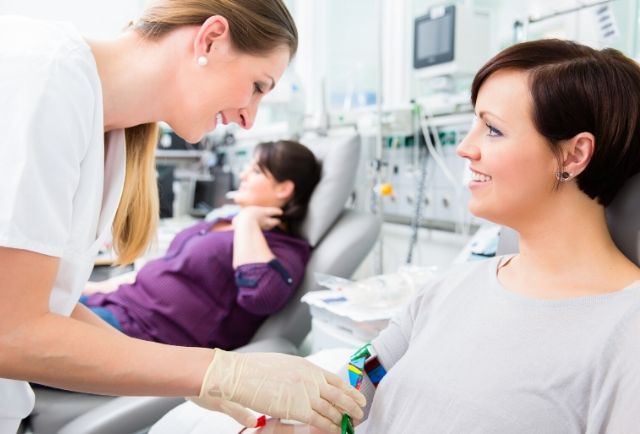What Does Northeast Medical Institute - New Haven Campus Phlebotomy Course & Cna Class Do?
What Does Northeast Medical Institute - New Haven Campus Phlebotomy Course & Cna Class Do?
Blog Article
Some Of Northeast Medical Institute - New Haven Campus Phlebotomy Course & Cna Class
Table of Contents3 Simple Techniques For Northeast Medical Institute - New Haven Campus Phlebotomy Course & Cna ClassNot known Factual Statements About Northeast Medical Institute - New Haven Campus Phlebotomy Course & Cna Class The Northeast Medical Institute - New Haven Campus Phlebotomy Course & Cna Class StatementsThings about Northeast Medical Institute - New Haven Campus Phlebotomy Course & Cna ClassSome Known Details About Northeast Medical Institute - New Haven Campus Phlebotomy Course & Cna Class Northeast Medical Institute - New Haven Campus Phlebotomy Course & Cna Class Fundamentals Explained
The use of such gadgets should be accompanied by other infection avoidance and control techniques, and training in their use.For setups with reduced sources, expense is a motoring consider procurement of safety-engineered gadgets - PCT Training. Where safety-engineered devices are not available, knowledgeable use a needle and syringe serves. Unexpected direct exposure and details details concerning an event need to be taped in a register. Support solutions should be advertised for those that go through unintended direct exposure.
One of the vital pens of high quality of treatment in phlebotomy is the involvement and cooperation of the patient; this is mutually advantageous to both the wellness worker and the patient. Clear details either composed or spoken need to be readily available to every client who undertakes phlebotomy. Annex F supplies example message for describing the blood-sampling procedure to an individual. labelling); transport conditions; interpretation of results for medical monitoring. In an outpatient division or facility, give a dedicated phlebotomy work area containing: a tidy surface area with two chairs (one for the phlebotomist and the other for the person); a hand clean container with soap, running water and paper towels; alcohol hand rub. In the blood-sampling room for an outpatient division or facility, give a comfortable reclining couch with an arm remainder.
9 Simple Techniques For Northeast Medical Institute - New Haven Campus Phlebotomy Course & Cna Class
Guarantee that the indicators for blood sampling are plainly defined, either in a composed protocol or in recorded guidelines (e.g. in a research laboratory type). In any way times, comply with the techniques for infection avoidance and control listed in Table 2.2. Infection prevention and control techniques. Collect all the tools required for the treatment and location it within secure and easy reach on a tray or cart, making certain that all the products are clearly noticeable.
Where the patient is adult and mindful, adhere to the actions described listed below. Introduce on your own to the person, and ask the person to mention their complete name. Inspect that the lab kind matches the person's identification (i.e. match the patient's information with the laboratory form, to ensure precise identification). Ask whether the license has allergic reactions, phobias or has actually ever before collapsed throughout previous injections or blood draws.
Make the person comfy in a supine placement (if possible). The individual has a right to reject a test at any time prior to the blood sampling, so it is vital to guarantee that the client has actually recognized the procedure - PCT Classes.
See This Report on Northeast Medical Institute - New Haven Campus Phlebotomy Course & Cna Class
Expand the person's arm and evaluate the antecubital fossa or forearm. Find a blood vessel of a good size that is noticeable, straight and clear. The diagram in Section 2.3, shows usual positions of the vessels, however many variants are possible. The typical cubital capillary exists between muscular tissues and is normally one of the most easy to puncture.
DO NOT put the needle where veins are diverting, due to the fact that this enhances the chance of a haematoma. The vein ought to show up without using the tourniquet. Situating the vein will help in identifying the appropriate size of needle. Apply the tourniquet about 45 finger widths over the venepuncture website and re-examine the capillary.
Specimens from central lines bring a threat of contamination or incorrect lab test results. It is acceptable, however not perfect, to attract blood specimens when first introducing an in-dwelling venous gadget, before connecting the cannula to the intravenous fluids.
The Ultimate Guide To Northeast Medical Institute - New Haven Campus Phlebotomy Course & Cna Class
Failing to enable sufficient call time boosts the risk of contamination. DO NOT touch the cleansed website; in particular, DO NOT place a finger over the blood vessel to lead the shaft of the revealed needle.
Ask the individual to form a hand so the capillaries are much more popular. Get in the vein quickly at Related Site a 30 level angle or much less, and proceed to present the needle along the capillary at the simplest angle of access - Phlebotomy Training. When adequate blood has been gathered, release the tourniquet prior to taking out the needle
The Ultimate Guide To Northeast Medical Institute - New Haven Campus Phlebotomy Course & Cna Class
Withdraw the needle delicately and use mild stress to the website with a clean gauze or completely dry cotton-wool ball. Ask the client to hold the gauze or cotton wool in place, with the arm extended and increased. Ask the person NOT to flex the arm, due to the fact that doing so causes a haematoma.

4 Simple Techniques For Northeast Medical Institute - New Haven Campus Phlebotomy Course & Cna Class
Where feasible, keep the tubes in a shelf and relocate the shelf towards you - https://penzu.com/p/b54c843834982687. If the example tube does not have a rubber stopper, infuse very slowly into the tube as decreasing the stress and speed utilized to move the specimen decreases the risk of haemolysis.

Report this page